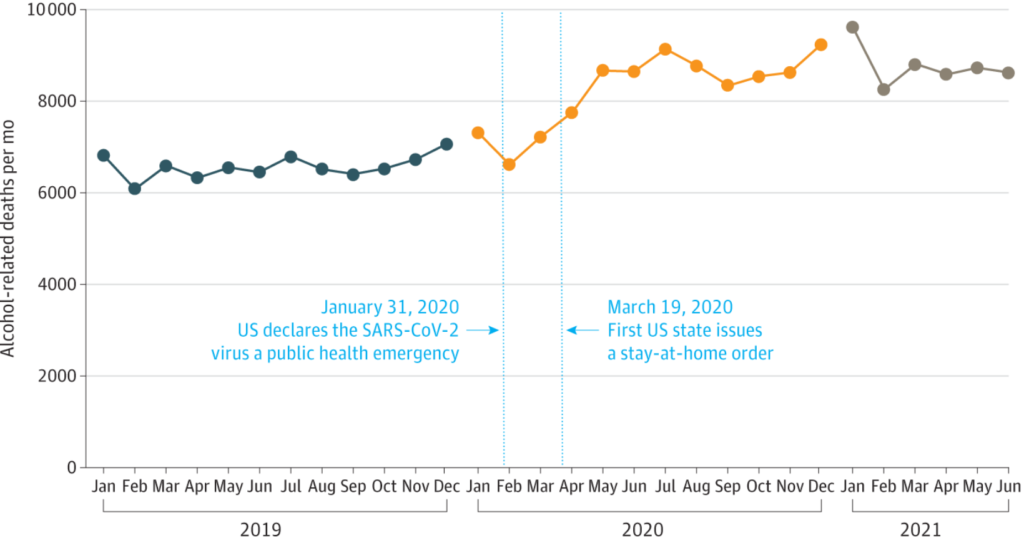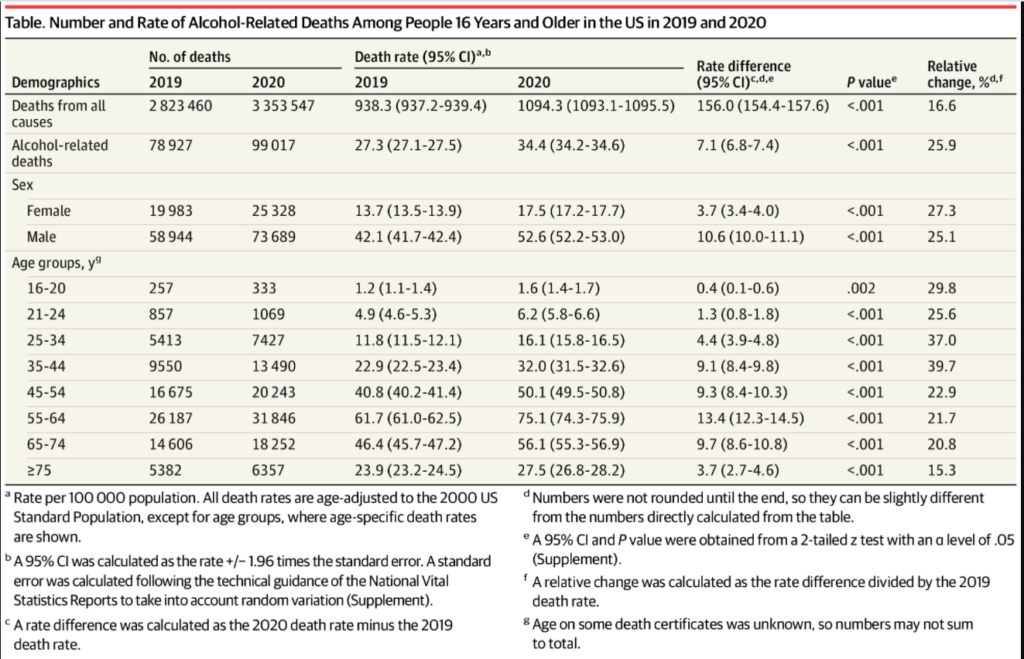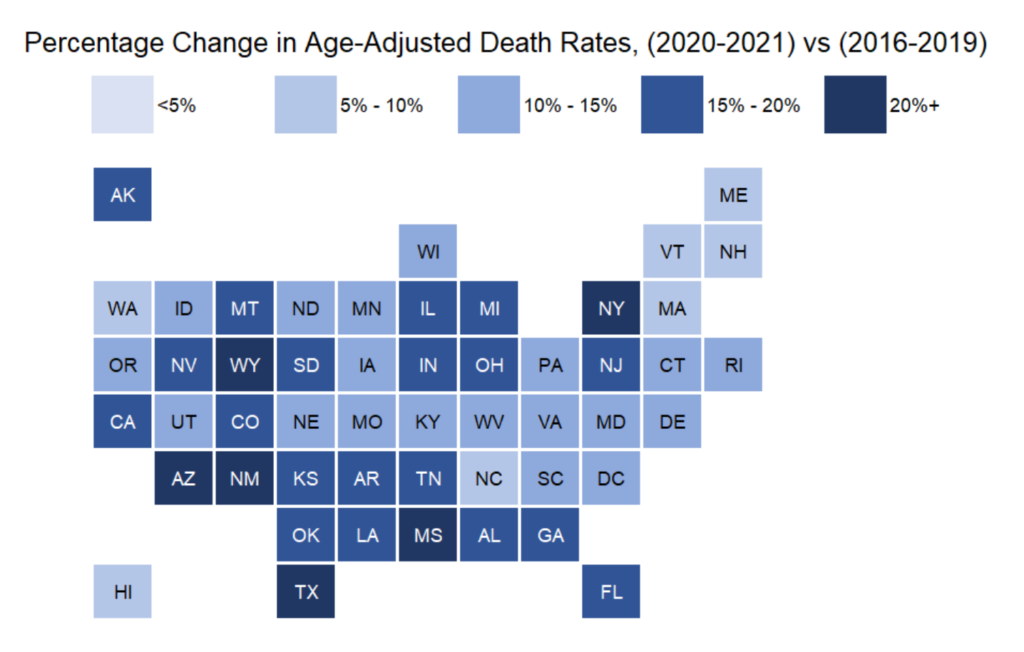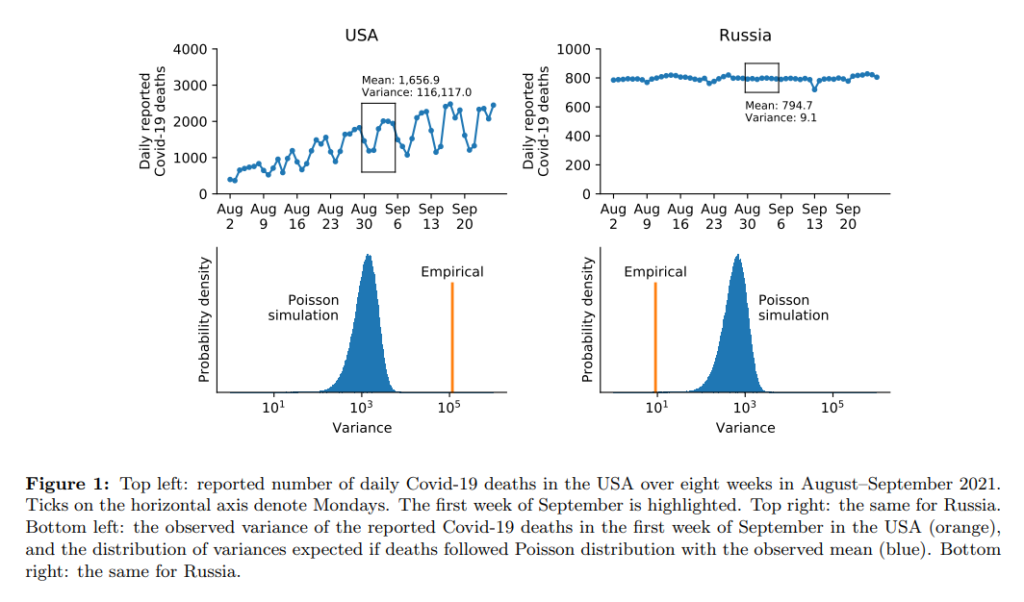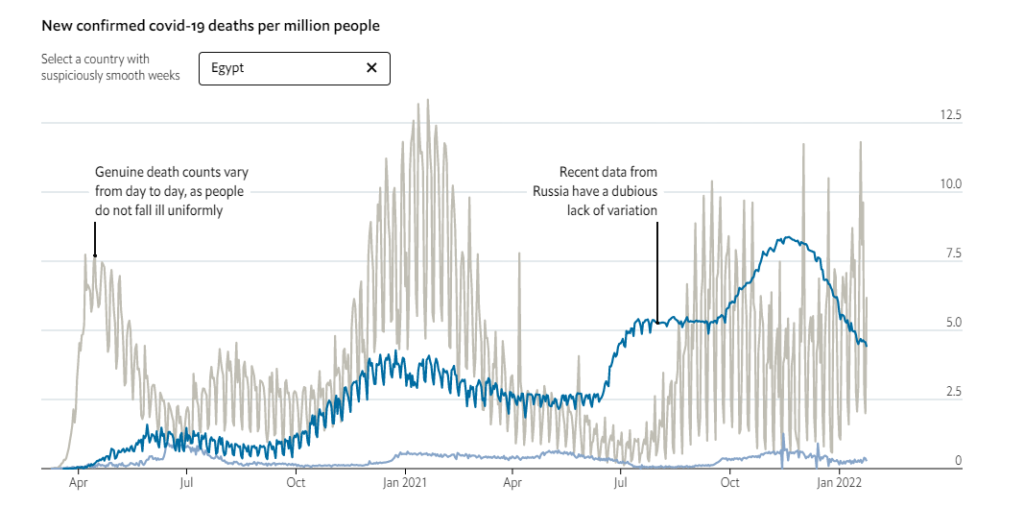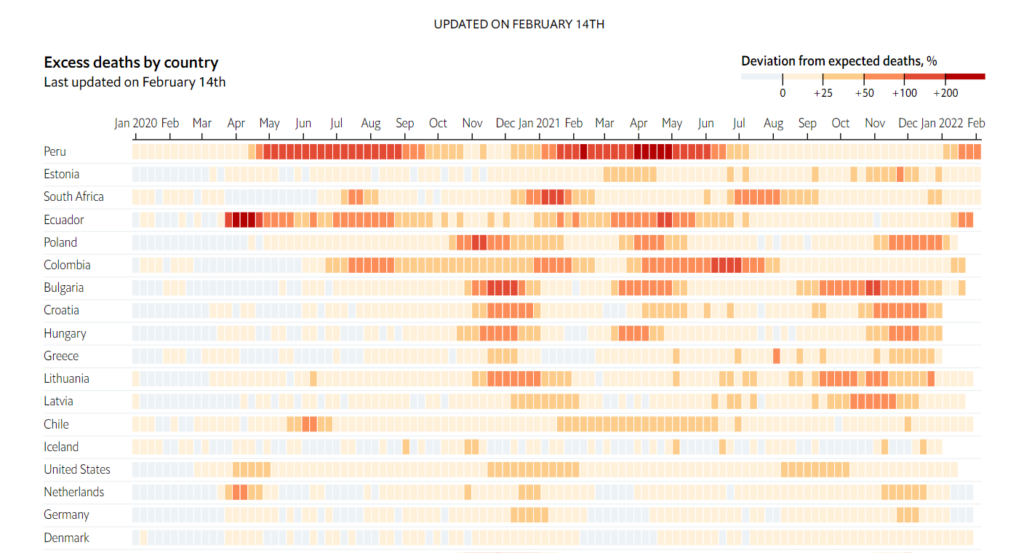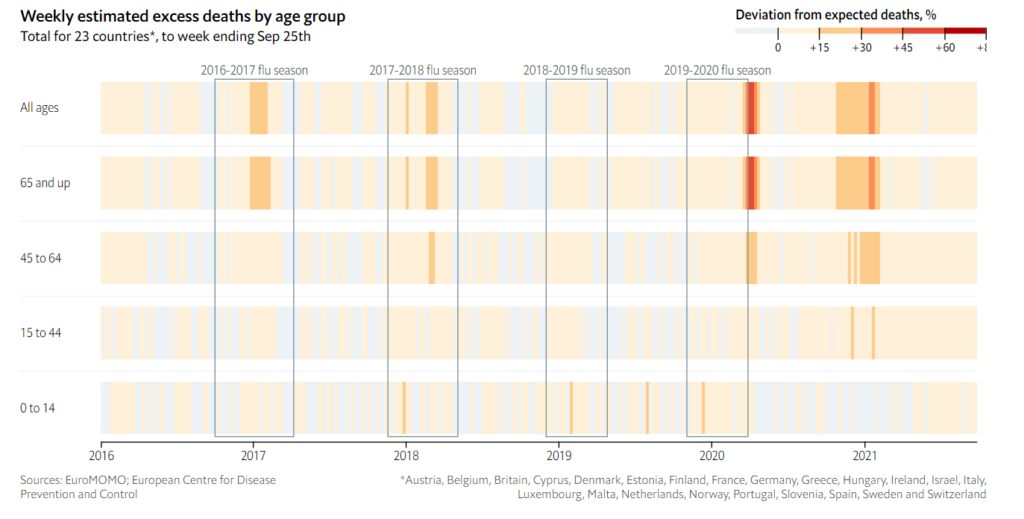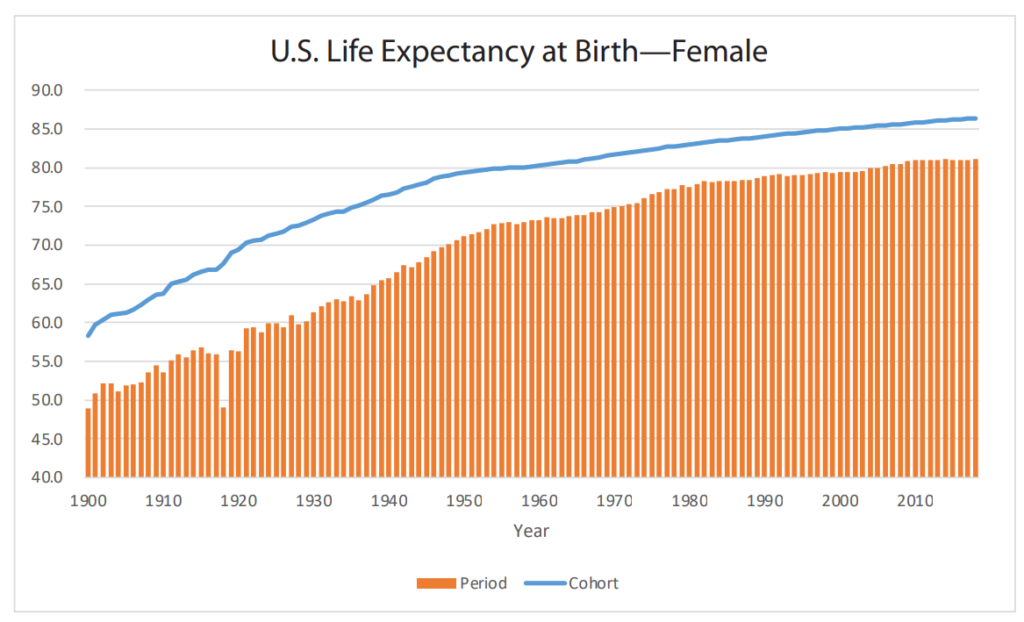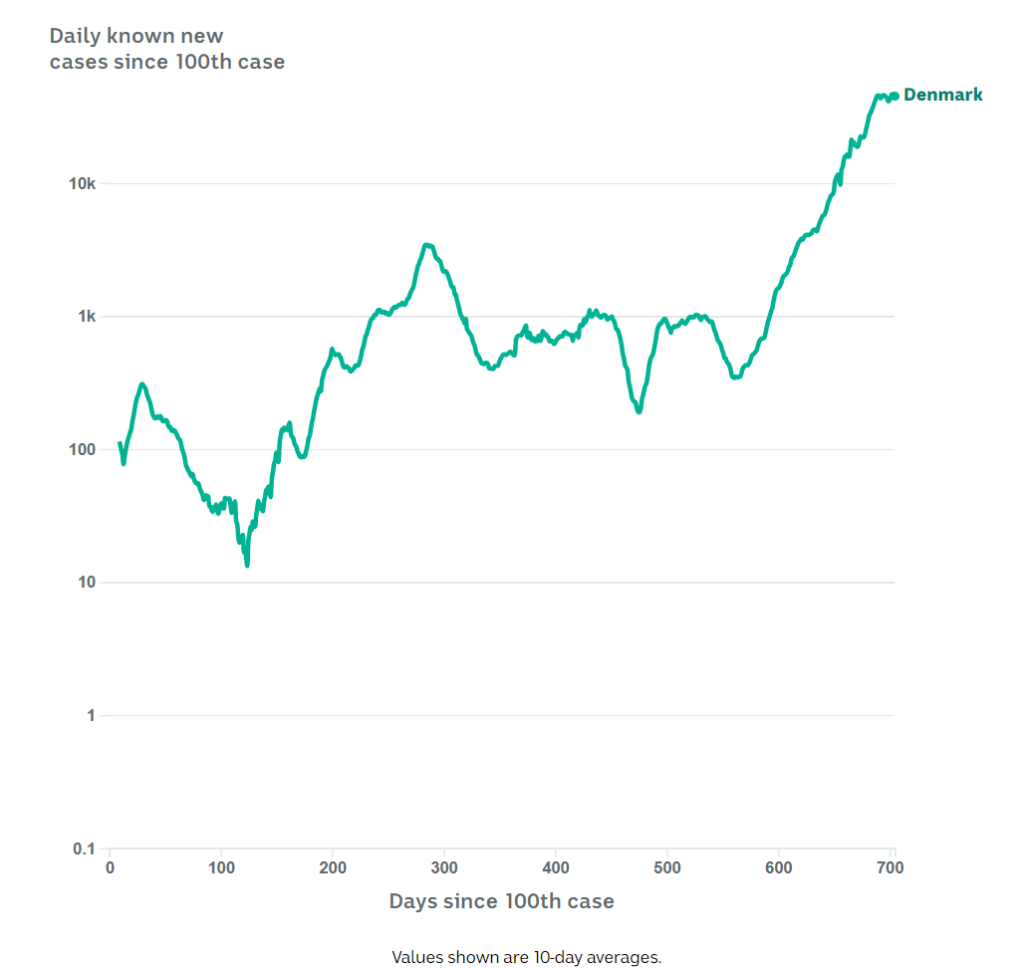Link: https://marypatcampbell.substack.com/p/preliminary-results-for-2021-all?s=w
Graphic:
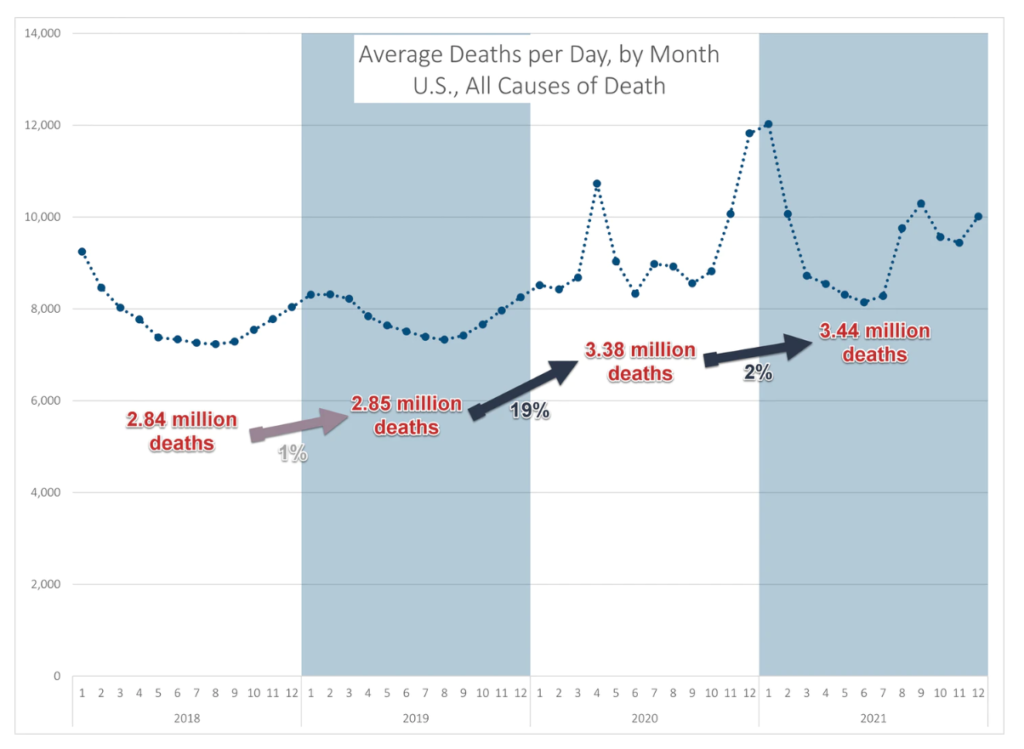
Excerpt:
As you can see from the annotation on the graph, so far there have been 2% more deaths reported in 2021 compared to 2020. You can see that there had been a spike of deaths at the beginning of 2021, then a quiet spring/early summer. I did not extend my graph into 2022, but the heightened mortality of later/summer fall into winter has continued into winter at the beginning of 2022.
For the record, the 1% increase in deaths from 2018 to 2019 was pretty common before, driven by regular growth of the aging population of the U.S.
Author(s): Mary Pat Campbell
Publication Date: 3 April 2022
Publication Site: STUMP at substack
